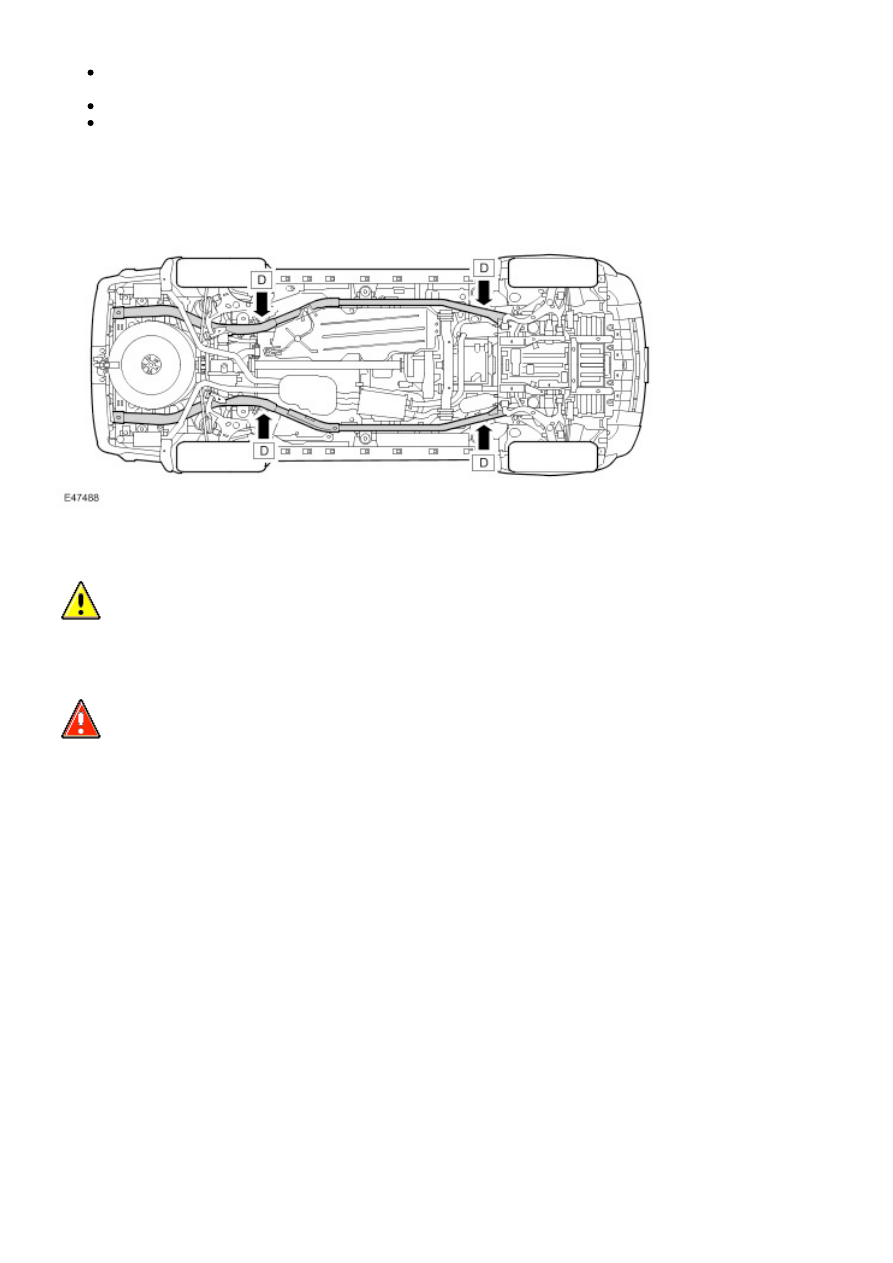Range Rover Sport. Manual - part 56

NOTE:
Point 'C' is in line with number 3 body mounting.
With vehicle at desired height, position axle stand(s) beneath longitudinal members and adjacent to the lifting pad of the
jack at appropriate point(s) D.
CAUTION: Position suitable material between axle stands and longitudinal members to prevent damage to
the longitudinal members.
Carefully lower jack until vehicle rests on axle stands.
WARNING: Before commencing work on underside of vehicle, ensure that axle stands are correctly
positioned and vehicle is securely supported.
Reverse procedure when removing vehicle from stands.